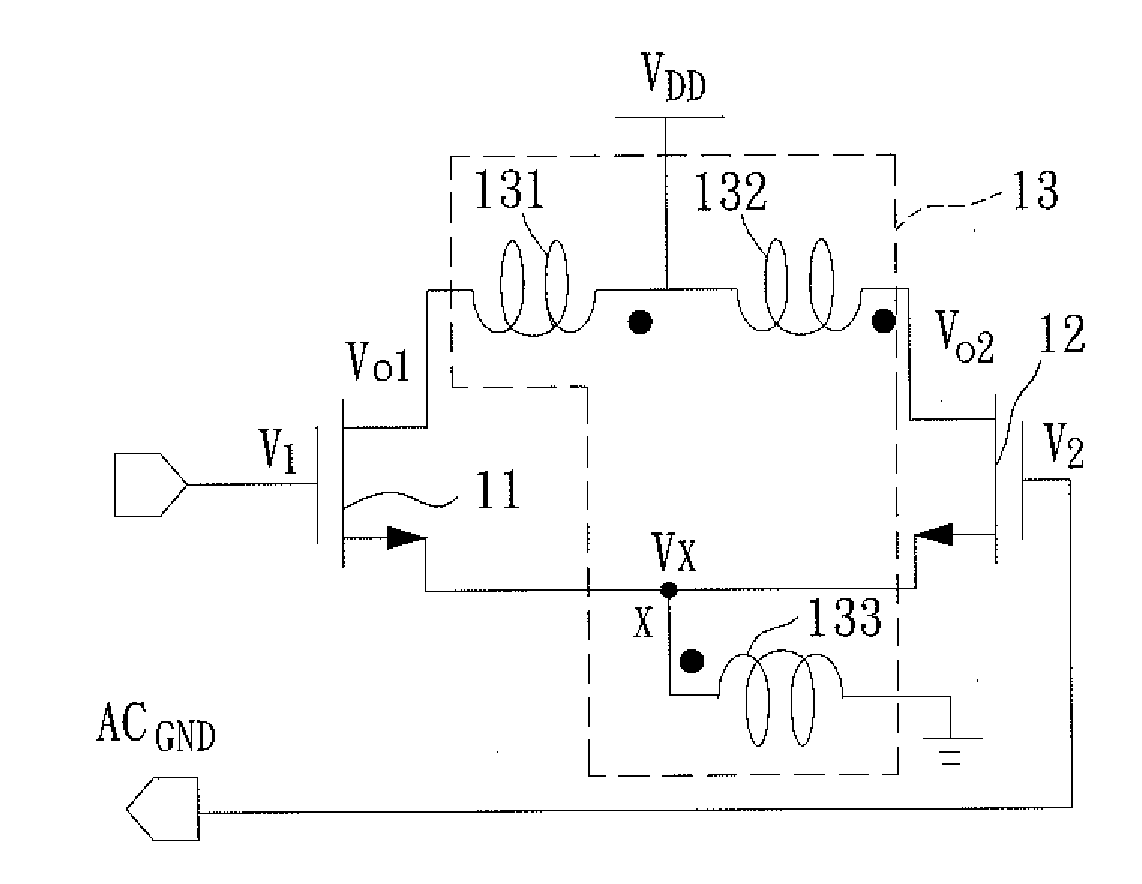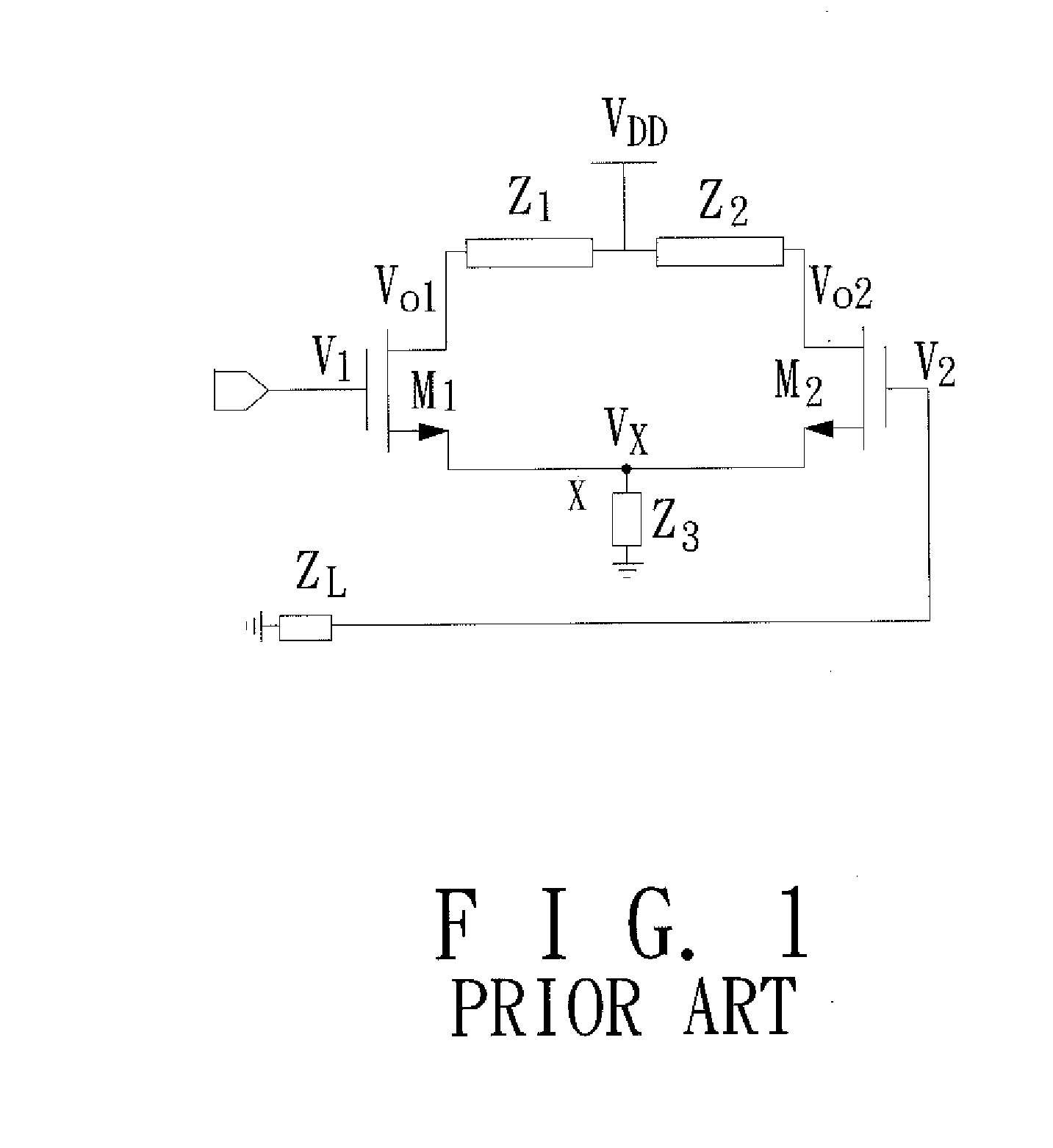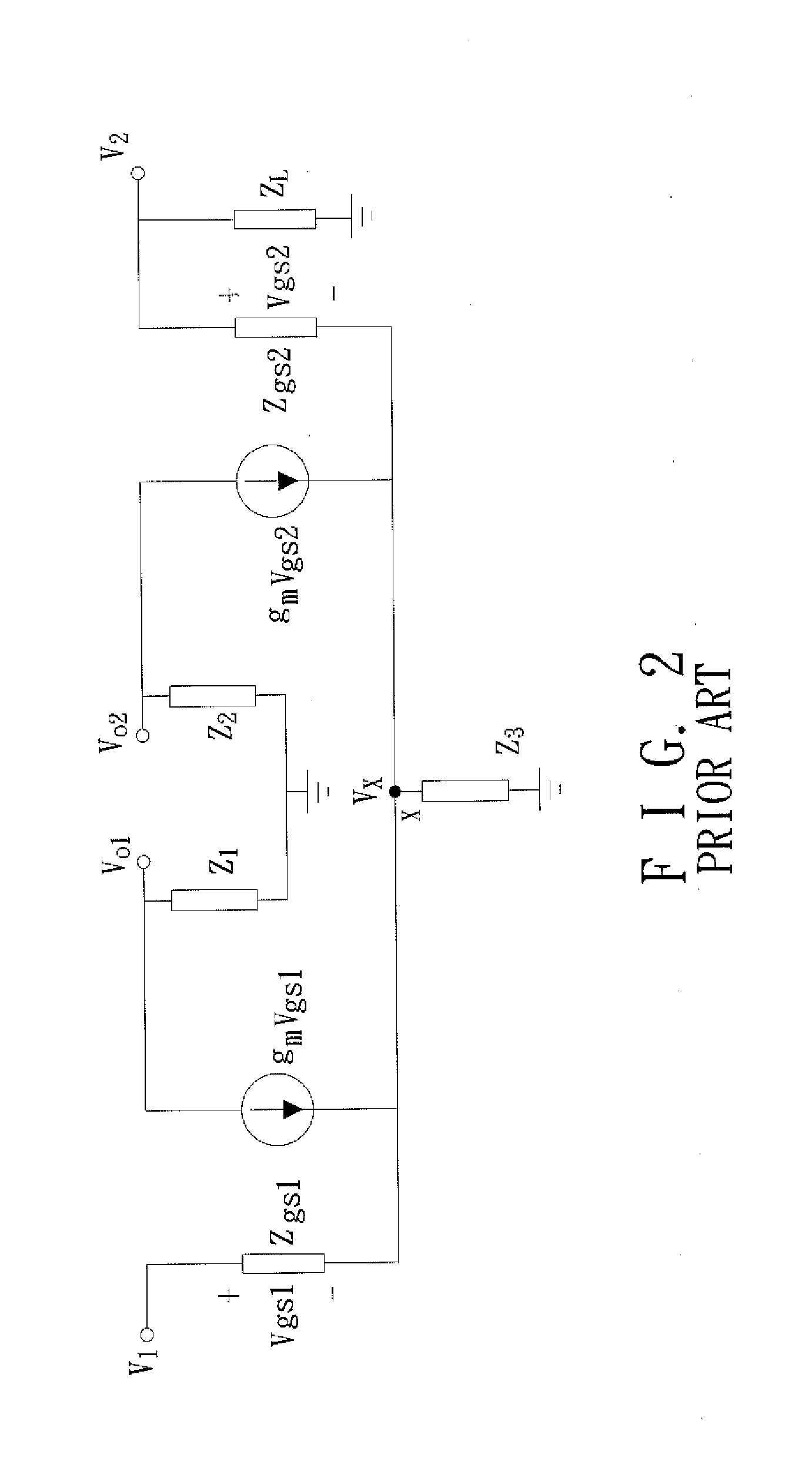Single-to-differential conversion circuit
a conversion circuit and single-to-differential technology, applied in the direction of pulse manipulation, pulse technique, inductance, etc., can solve problems such as unbalanced set of differential signals
- Summary
- Abstract
- Description
- Claims
- Application Information
AI Technical Summary
Benefits of technology
Problems solved by technology
Method used
Image
Examples
Embodiment Construction
[0023]FIG. 3 shows the preferred embodiment of a single-to-differential conversion circuit of the present invention that comprises a first transistor 11, a second transistor 12, and a transforming unit 13.
[0024]The first transistor 11 has a first terminal, a second terminal, and a third terminal which receives an input signal. The second transistor 12 has a first terminal, a second terminal and a third terminal. In the present embodiment, the first and second transistors 11, 12 are both N-type metal oxide semiconductor-field effect transistors. The first terminals of both first and second transistors 11, 12 are source terminals. The second terminals of both first and second transistors 11, 12 are drain terminals. The third terminals of both first and second transistors 11, 12 are gate terminals.
[0025]The transforming unit 13 has a first induction element 131, a second induction element 132 and a third induction element 133. The first induction element 131 has a first inductive termi...
PUM
 Login to View More
Login to View More Abstract
Description
Claims
Application Information
 Login to View More
Login to View More - R&D
- Intellectual Property
- Life Sciences
- Materials
- Tech Scout
- Unparalleled Data Quality
- Higher Quality Content
- 60% Fewer Hallucinations
Browse by: Latest US Patents, China's latest patents, Technical Efficacy Thesaurus, Application Domain, Technology Topic, Popular Technical Reports.
© 2025 PatSnap. All rights reserved.Legal|Privacy policy|Modern Slavery Act Transparency Statement|Sitemap|About US| Contact US: help@patsnap.com



